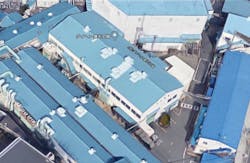The bulk of available information about the Industrial Internet of Things (IIoT) tends to center on developing and available technologies, testbeds and the transformational possibilities the concept holds for businesses of all sizes. Not so readily available is information about companies actually applying IIoT technologies for specific production applications.
A recent IIoT application announcement, however, indicates that we may be moving beyond the first few stages of the IIoT concept—where developing technology news reigns—and into a stage of publicly available application information.
The announcement came from FogHorn Systems—an analytics technology supplier— and highlighted use of the company’s software by Daihen Corporation, a Japanese industrial electronics company. Daihen is using FogHorn Systems edge computing software to automate the production of its industrial transformers. FogHorn’s Lightning Edge ML (machine learning) provides Daihen with real-time analytics and machine learning at the edge and has helped the company identify production errors as they occur while also improving collaboration and data accuracy.
Daihen says the FogHorn software has helped it eliminate 5,000 hours of manual data entry per year.
The Lightning Edge ML software was brought into Daihen’s operations to help operations leaders at Daihen’s Osaka factory more quickly analyze sensor data and reduce the need for manual monitoring of dozens of devices deployed throughout the factory to measure material condition. As part of the FogHorn software deployment, Daihen installed additional sensors to monitor the temperature, humidity and dust levels throughout the manufacturing process via RFID (radio frequency identification). In the first, six-month stage of this sensor deployment, 70 percent of the factory was covered by the RFID-based tracking system. Daihen expects to achieve 100 percent coverage of its Osaka factory before the end of this year.
The deployment of these additional sensors provide the data needed to produce real-time analytics to identify how each part of the electric transformers are assembled and stored. The data also tracks how long each stage takes to complete. FogHorn’s Lightning Edge ML software analyzes all of this data to provide insights into changes that could indicate impacts to the quality of components being produced.
Of course, application announcements such as this one from Daihen are not yet outpacing the continuing stream of IIoT technology development news. In fact, just prior to FogHorn’s Daihen announcement, Google announced that it is integrating FogHorn Systems' Lightning Edge ML with its Cloud IoT Core, a managed service from Google that allows users to securely connect, manage and ingest data from globally dispersed devices.
“By combining industry-leading edge intelligence from FogHorn, we’ve created a fully-integrated edge and cloud solution that maximizes the insights gained from every IoT device,” said Antony Passemard, head of IoT product management at Google Cloud.
According to Google, Cloud IoT Core captures device data and publishes them to Cloud Pub/Sub for downstream analytics. Businesses can then conduct ad hoc analysis using Google BigQuery, run advanced analytics and apply machine learning with Cloud Machine Learning Engine, or visualize IoT data results with rich reports and dashboards in Google Data Studio. FogHorn’s Lightning Edge adds to Google’s Cloud IoT Core by enabling data processing at or near the source of sensor data.
FogHorn “enriches and optimizes data published to the cloud for further processing and analysis,” said Google in its release about the technology collaboration between the two companies.
Leaders relevant to this article:


